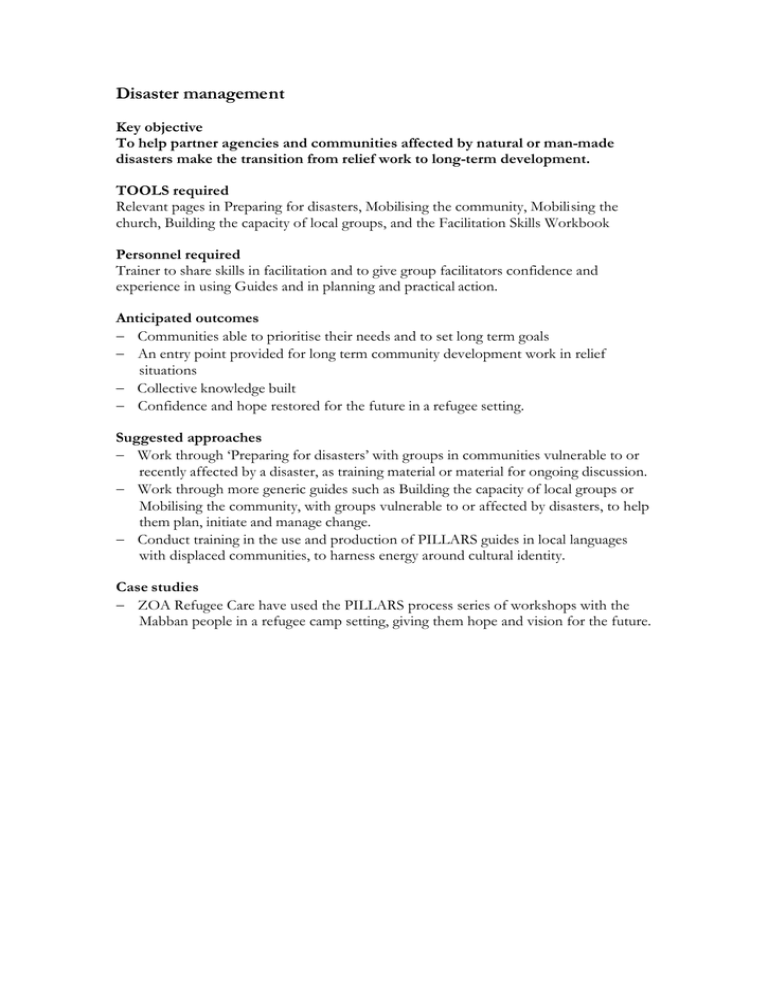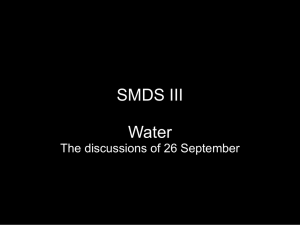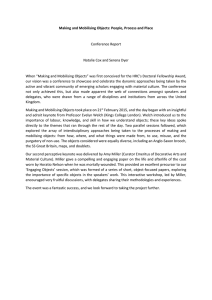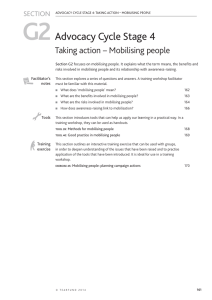Disaster management
advertisement

Disaster management Key objective To help partner agencies and communities affected by natural or man-made disasters make the transition from relief work to long-term development. TOOLS required Relevant pages in Preparing for disasters, Mobilising the community, Mobilising the church, Building the capacity of local groups, and the Facilitation Skills Workbook Personnel required Trainer to share skills in facilitation and to give group facilitators confidence and experience in using Guides and in planning and practical action. Anticipated outcomes − Communities able to prioritise their needs and to set long term goals − An entry point provided for long term community development work in relief situations − Collective knowledge built − Confidence and hope restored for the future in a refugee setting. Suggested approaches − Work through ‘Preparing for disasters’ with groups in communities vulnerable to or recently affected by a disaster, as training material or material for ongoing discussion. − Work through more generic guides such as Building the capacity of local groups or Mobilising the community, with groups vulnerable to or affected by disasters, to help them plan, initiate and manage change. − Conduct training in the use and production of PILLARS guides in local languages with displaced communities, to harness energy around cultural identity. Case studies − ZOA Refugee Care have used the PILLARS process series of workshops with the Mabban people in a refugee camp setting, giving them hope and vision for the future.




